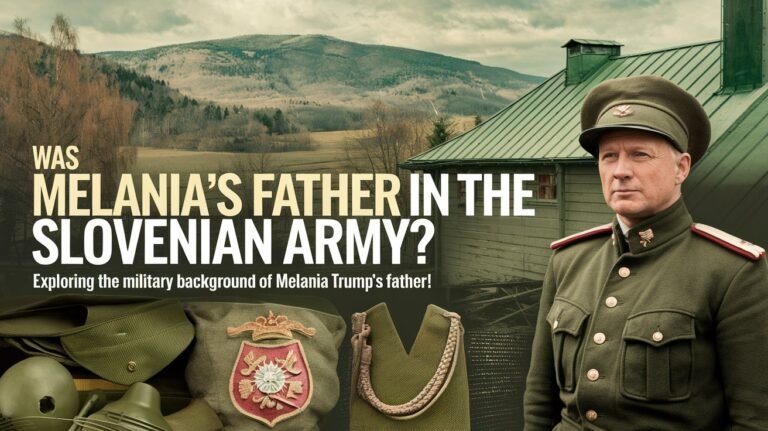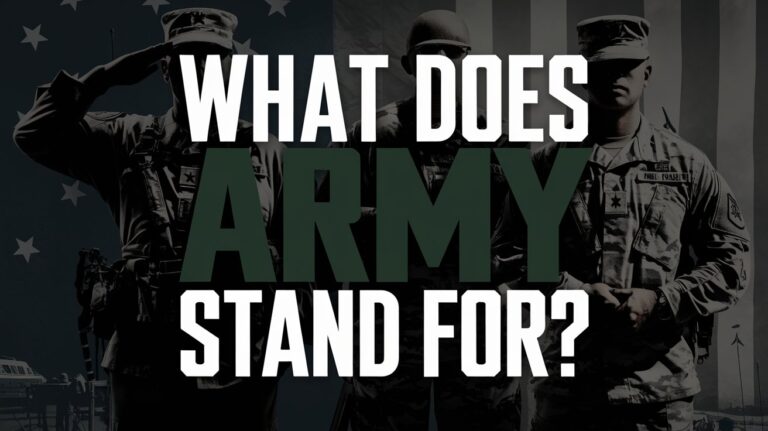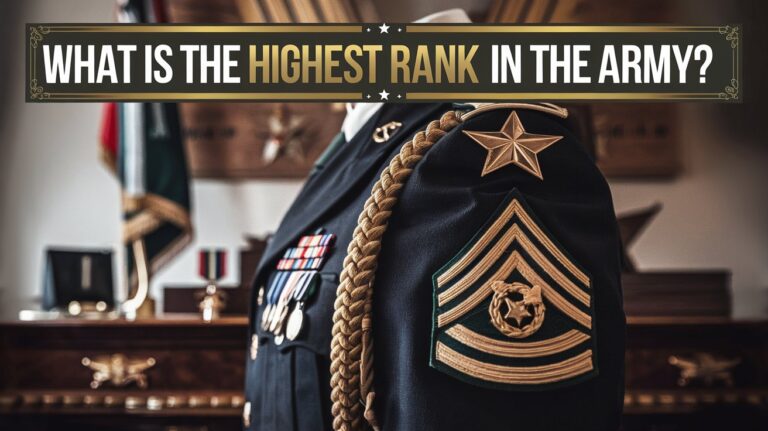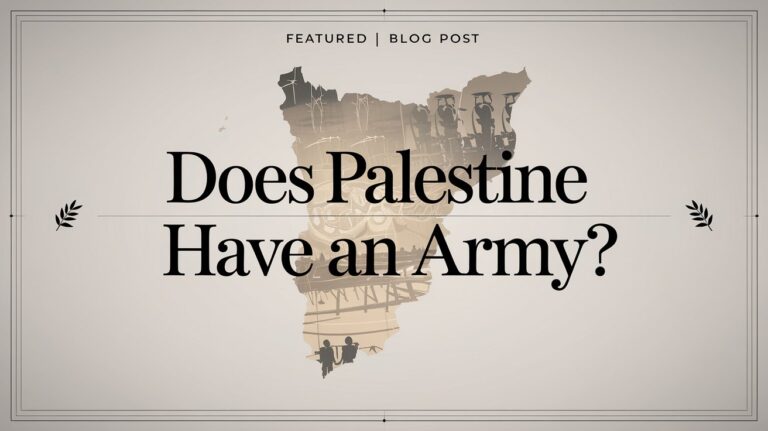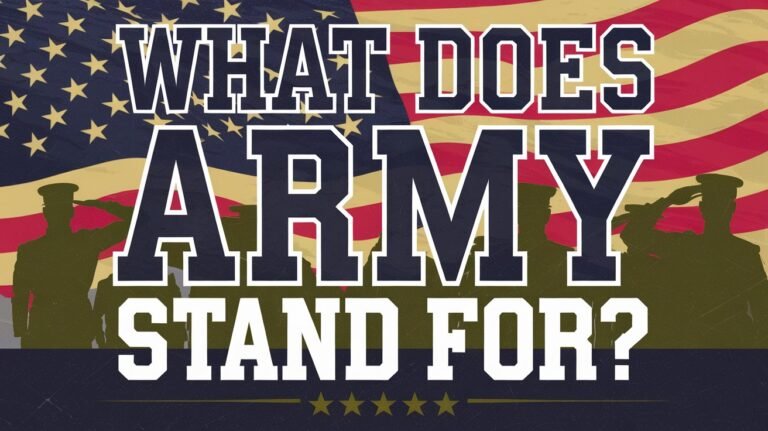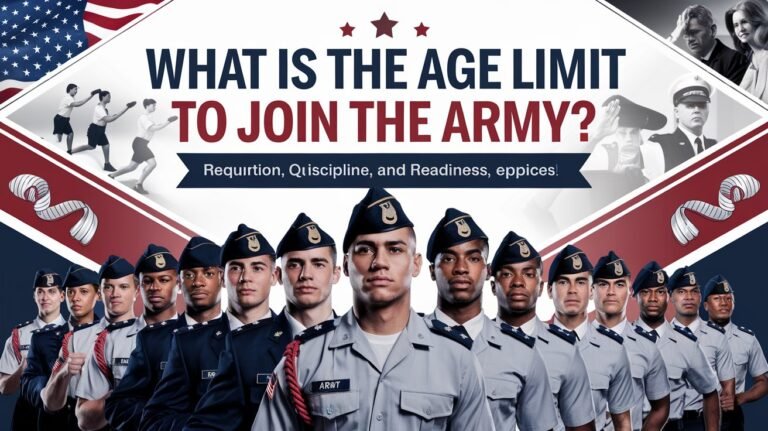What Pistol Does The British Army Use Inww2? Key Details
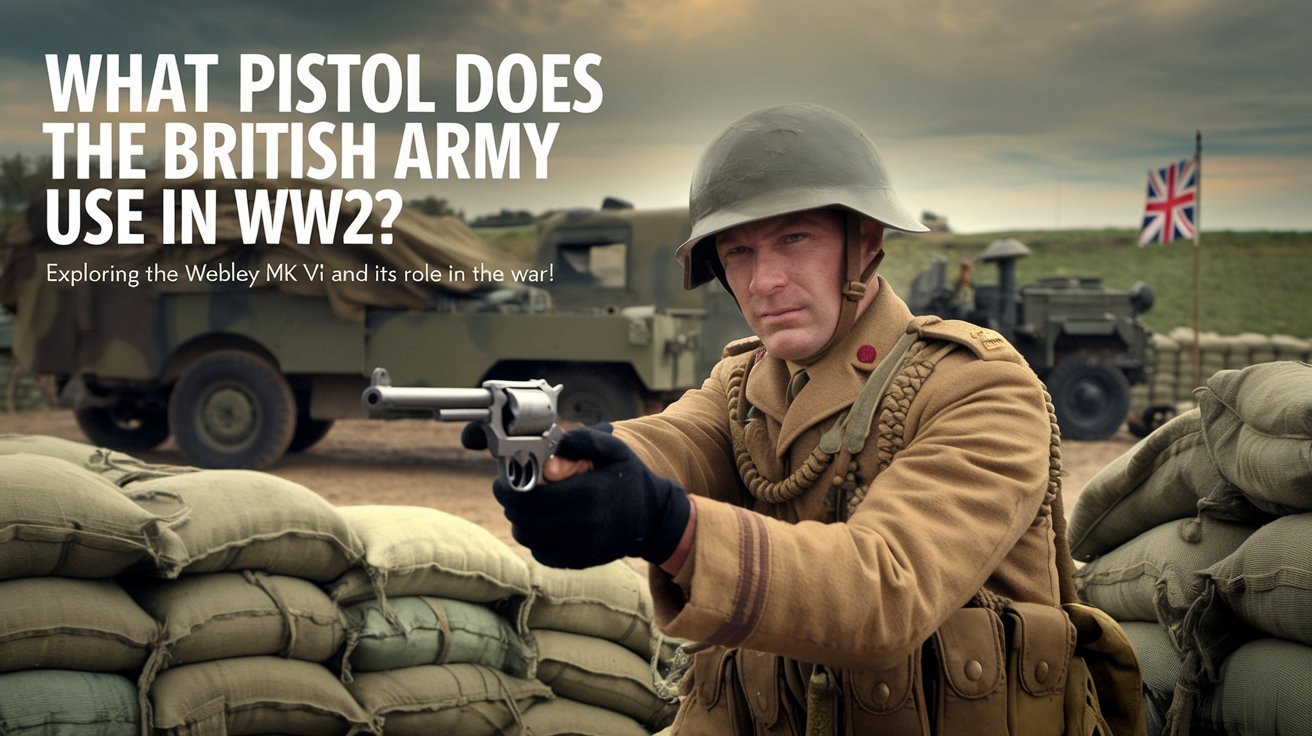
During World War II, the British Army used many pistols. The Webley revolver, the Enfield No.2 revolver, and American Lend-Lease sidearms were key. The Webley revolver was the main pistol since 1887. The Enfield No.2 Mk I .38/200 caliber revolver became the main pistol in WWII because of Webley shortages.
The British Army’s sidearms were vital in close combat. They gave soldiers a reliable backup weapon. As the war went on, more pistols were needed. This led to using different designs and sources to meet the demand.
Key Takeaways
- The Webley revolver was the standard service pistol for the British Army from 1887 to 1963.
- The Enfield No.2 Mk I .38/200 caliber revolver became the official service pistol during World War II.
- Due to shortages, both Webley Mk IV in .38/200 and Mk VI in .455 caliber were issued to British personnel.
- American-supplied sidearms, such as the Colt and Smith & Wesson revolvers, were also used by the British Army during the war.
- The demand for reliable sidearms increased throughout the conflict, leading to the adoption of alternative designs and sources to supplement existing inventories.
What Pistol Does The British Army Use In WW2
During World War II, the British Army used many pistols. The main ones were the Webley service revolvers, Enfield No.2 revolver variants, and some American guns.
Webley Service Revolvers
The Webley Mk IV and Mk VI were key pistols for the British Army. Introduced in 1915, the Mk VI became famous. It used the .455 Webley cartridge and was known for its strength and reliability.
Enfield No.2 Variants
The Enfield No.2 Mk I was the official sidearm in .38/200 caliber. It was made in big numbers and used a lot during the war. It worked well with the Webley revolvers.
American Lend-Lease Sidearms
The British Army also used American guns from the Lend-Lease program. This included the Smith & Wesson Model 10 and the Colt M1911A1. These guns helped fill the need for more pistols during the war.
Legendary Webley Mk VI: Design and Specifications
The Webley Mk VI was a legendary top-break revolver introduced in 1915. It was known for its powerful .455 Webley cartridges. This iconic British sidearm was one of the most formidable top-break revolvers of its time.
It had a 6-inch barrel, an overall length of 11.25 inches, and weighed 2.4 lbs unloaded. Its 6-round cylinder and fixed sights made it reliable and accurate. Even in harsh conditions, it proved to be a workhorse for the British Army during World War I and World War II.
The Webley Mk VI was famous for its .455 Webley cartridge. This large, high-powered round gave the revolver exceptional stopping power. Its top-break design allowed for quick and easy reloading, making it versatile and effective in combat.
The Webley Mk VI remained in service with the British Army throughout both world wars. Its legacy as a robust, powerful, and accurate top-break revolver has cemented its place in military firearms history.
Enfield No.2 Mk I: Britain’s Standard Issue Revolver
During World War II, the British military used the Enfield No.2 Mk I as their main sidearm. It fired the .38/200 calibre and was known for its strength and dependability. The Enfield No.2 Mk I was made to use the .380 inch Mk. I and Mk. Iz cartridges.
It had a muzzle velocity of 620–650 ft/s (190–200 m/s). This made it effective at close range.
Technical Features
The Enfield No.2 Mk I was a double-action revolver. It weighed 1.7 lb (765 g) when empty and was 10.25 in (260 mm) long. Its barrel was 5.03 in (127 mm) long.
It could fire 20–30 rounds per minute. Its effective range was 15 yards (13.7 m), and it could reach up to 200 yd (182.8 m).
Combat Performance
The Enfield No.2 Mk I was known for its simplicity and reliability. It was designed for close combat, with a spurless hammer and plastic grips. Even after WWII, it stayed in use until 1969.
It was then replaced by the Browning Hi-Power.
Production Numbers
Many Enfield No.2 Mk I revolvers were made. Around 55,000 of the original Mk I were produced. Plus, about 270,000 of the Mk I* and Mk I variants were made.
This large number ensured the Enfield was available to British forces during and after the war.
| Enfield No.2 Mk I Variants | Production Numbers |
|---|---|
| Mk I | 55,000 |
| Mk I* | Approx. 270,000 |
| Mk I | Approx. 270,000 |
Browning Hi-Power: The Belgian Connection
Browning Hi-Power, also known as the FN-Inglis or “Pistol No.II Mk.I*” in British service, was key in World War II. It was a 9mm semi-automatic pistol designed by John Browning and improved by Dieudonné Saive. Produced in Canada by John Inglis and Company, it was used by Allied forces, including British and Commonwealth troops.
This pistol was made to meet the French military’s need for a compact pistol with a large magazine. It had features from the Colt Model 1911 and a 13-round magazine. During WWII, it was used by both Allied and Axis forces. Those made by FN in German-occupied Belgium were called “Pistole 640(b)” by the Germans.
More than 1.5 million Browning Hi-Powers were made and used in over 50 countries. It saw action in many conflicts, including the Indonesian National Revolution and the Korean War. Its production stopped in 2018 but started again in 2022 with new features. This has made it even more respected as a sidearm.
| Statistic | Value |
|---|---|
| Years in Service | 1935 – Present |
| Total Production | Over 1,500,000 units |
| Number of Countries Using | Over 50 |
| Caliber | 9mm Parabellum |
| Magazine Capacity | 10, 13, 15, or 17 rounds |
Smith & Wesson and Colt Revolvers in British Service
During World War II, the British armed forces used many sidearms. They got American-made revolvers through the Lend-Lease program. The Smith & Wesson Model 10 and the Colt New Service were two models widely used.
Model 10 Specifications
The Smith & Wesson Model 10, also called the “Hand Ejector,” was a .38/200 caliber revolver. It became a key weapon for British forces. The US and Great Britain armed forces received over 2.5 million of these revolvers during both World Wars.
Between 1940 and 1946, 890,000 Smith & Wesson 0.38/200 revolvers were made for British troops. This made it one of the most common sidearms issued.
Combat Effectiveness
The Smith & Wesson Model 10 and Colt New Service revolvers were effective in combat. The Colt New Service was a large-frame revolver for the .455 Webley cartridge. The Smith & Wesson Model 10 was for the .38/200 caliber.
These American-made revolvers were key for allied infantry pistols during the war.
British Purchasing Commission bought over 110,000 smith & wesson model 10 revolvers from Smith & Wesson in 1940. Canada bought 118,000 colt new service revolvers from 1939 to 1943 to help in the war effort.
Ammunition Types and Compatibility
During World War II, British forces used many types of ammunition for their sidearms. The .455 Webley cartridge was the main round for the famous Webley Mk VI revolver. The .38/200 (also known as .38 S&W) was used in the Enfield No.2 and Webley Mk IV revolvers. The 9mm Parabellum was the go-to for the Browning Hi-Power pistol, a favorite among British troops.
As the war went on, ammo shortages meant older revolver models kept getting used. This mix of ammo types and sidearms made British soldiers skilled in handling different handguns and their cartridges.
| Sidearm | Ammunition Type | Caliber |
|---|---|---|
| Webley Mk VI Revolver | .455 Webley | .455 inches |
| Enfield No.2 & Webley Mk IV Revolvers | .38/200 (or .38 S&W) | .38 inches |
| Browning Hi-Power Pistol | 9mm Parabellum | 9mm |
Special Operations Pistols and Suppressed Variants
In World War II, British special units used the Welrod pistol for secret missions. This bolt-action pistol was made for quiet operations. It was very quiet in combat.
The Welrod Pistol
About 14,000 Welrod pistols were made, with 2,800 during the war. The Welrod Mk I fired 9×19mm Parabellum rounds. The Welrod Mk II fired .32 ACP rounds.
The Welrod had a 3.25-inch barrel. It could hit targets up to 25 yards away during the day. At night, it could hit up to 7-8 yards away.
Covert Operations Usage
The Welrod was for irregular forces and resistance groups. It was mainly used by the British Special Operations Executive (SOE). The American Office of Strategic Services (OSS) and other groups also used it.
This gun was key for sabotage and gathering intel. It was very quiet, with a sound level of just 122.8 decibels.
Its use had big consequences. Plans for mass assassinations led to arrests and killings of civilians. At least 13,000 were arrested, and 5,000 were killed in German reprisals.
Welrod was used long after World War II. It was used in the Falklands War, The Troubles in Northern Ireland, and Operation Desert Storm. Its ability to be quiet made it valuable for British special operations forces.
Pistol Training and Combat Doctrine
The British Army focused on accuracy and quick drawing in pistol training during World War II. Soldiers learned to use their sidearms well in close combat. This skill was key as the war moved to urban areas.
Training included keeping the weapon in good shape, shooting well, and using pistols in different situations. Soldiers could draw and fire fast, ready for sudden threats. They also learned to shoot in the dark, important for night battles.
- Emphasis on accuracy and quick draw during british army firearms training
- Tactical training for pistol combat tactics in urban warfare and night operations
- Comprehensive instruction on weapon maintenance, marksmanship, and tactical employment of sidearms
British Army’s dedication to pistol training helped a lot during the war. Soldiers were ready to use their pistols effectively in tight spots. This made the army stronger in battle.
Supply and Distribution Across Theater of Operations
The British Army had big challenges in getting pistols to different war zones during World War II. But, they had a strong logistics network. This helped them send guns and ammo to the front lines quickly.
Commonwealth forces also got sidearms like the British ones. This was thanks to the British Army’s efforts.
The Lend-Lease program was key in solving shortages. It brought in American pistols like the Colt M1911A1 and Smith & Wesson revolvers. These guns helped fill the gaps in the British arsenal.
Supply plans changed based on the war’s needs. This made sure the right guns got to the right places.
Despite the war’s huge size, the British Army’s logistics were strong. They kept the flow of pistols and other small arms going. This was crucial for the troops to have the firepower they needed.
Frequent Questions
What pistols did the British Army use during World War II?
The British Army used many pistols in World War II. They included the Webley revolver, Enfield No.2 revolver, and sidearms from the US like the Smith & Wesson Model 10 and Colt M1911A1.
What was the standard issue service revolver for the British armed forces during WWII?
The Webley revolver, including the Mk IV and Mk VI models, was the standard issue from 1887 to 1963.
What was the official service pistol for the British military during WWII?
The Enfield No.2 Mk I .38/200 calibre revolver was the official service pistol during World War II.
What were the technical features and specifications of the Webley Mk VI revolver?
Introduced in 1915, the Webley Mk VI was a top-break revolver. It fired .455 Webley cartridges, making it powerful. It had a 6-inch barrel, weighed 2.4 lbs unloaded, and held 6 rounds.
What were the key features of the Enfield No.2 Mk I revolver?
The Enfield No.2 Mk I was used by the British military in WWII. It fired .38/200 calibre cartridges. Known for its simplicity and reliability, it was produced in large numbers.
What other pistols were used by the British forces during WWII?
The Browning Hi-Power was used by British forces. American-supplied revolvers like the Smith & Wesson Model 10 and Colt New Service were also provided through Lend-Lease.
What types of ammunition were used with the British Army’s pistols during WWII?
The .455 Webley was used in Webley Mk VI revolvers. The .38/200 was used in Enfield No.2 and Webley Mk IV revolvers. 9mm Parabellum was used in Browning Hi-Power pistols.
Did the British Army use any specialized pistols for special operations during WWII?
Yes, special operations units used unique pistols like the Welrod. It was a bolt-action suppressed pistol for covert operations. Other suppressed variants were also developed.
How did the British Army train its soldiers to use pistols during WWII?
Training focused on accuracy and quick drawing. Soldiers learned to use sidearms in close combat. Training evolved to include urban warfare and night operations.
How did the British Army distribute and supply pistols to its forces during WWII?
The British Army faced challenges in supplying pistols. Logistics networks delivered firearms and ammunition to units. American-made pistols through Lend-Lease helped with shortages.

